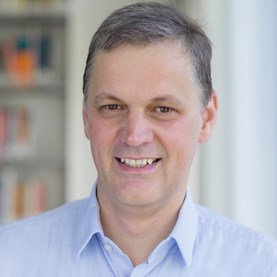“Our aim is to make advanced technologies accessible to SMEs”
Small and medium-sized enterprises (SMEs) often do not have the resources to develop individual electronic applications. Fraunhofer Microelectronics spoke to Andreas Brüning from Fraunhofer IIS / EAS about how the joint project USeP is helping SMEs to put together the high-tech product of their choice from a construction kit containing highly integrated elements.
For the research project USeP (Universal Sensor Platform), four institutes within the Group for Microelectronics have joined forces with an industrial partner. How should we imagine the project?
Put simply, we are working together on a type of modular technology for small and medium-sized enterprises. Our medium-sized companies are rightly thought of as drivers of innovation. However – and this is particularly true of the semiconductor industry – change is now happening so quickly that many companies are in effect being left behind. Let’s just look at the topic of the “Internet of Things.” Electronic applications from this field must be extremely powerful, highly integrated, and smart. However, such individual solutions are generally not made in large batches. Standard semiconductors, which are the type generally now used by SMEs, are no longer of much use. These companies generally do not have the necessary resources to develop their own solutions, however. For a high-end sensor product, the development costs can quickly reach € 20 million or more. What’s more, it often takes years until the product is ready. Our aim is to make advanced technologies accessible to SMEs.
How can USeP help?
We have simply rethought product development. Our solution is based on a technological platform that SMEs can use to manufacture a sensor node from various devices. This gives them not only a system-on-chip (SoC), as currently already offered by semiconductor manufacturers, but a complete customized package. This means that SMEs can help themselves to the contents of a construction kit containing the most modern highly integrated elements and put their desired product together. In addition to an SoC, they can choose from among various sensors and are given an energy supply system and interfaces for communication with the outside world. Order processing for the SMEs is intended to be about as simple as configuring a car. They enter their desired specification and receive a suitable sensor node for their products for a fraction of the usual cost and within a few months.
The Engineering of Adaptive Systems EAS division of the Fraunhofer Institute for Integrated Circuits IIS is managing the project. What are your duties as the responsible coordinator?
We organize the cooperation between the partners and ensure that all the parts of the puzzle fit together at the end and make a whole picture, even though they are made in different places. With our innovative approach, that is not an easy task, as a lot of good ideas need to be discussed, evaluated, and integrated into the overall concept.
How can SMEs get involved even at the project stage?
It is particularly important to us that SMEs get involved, because we want to make sure that our developments match their needs. Medium-sized firms that are interested can contribute their requirements to the research network, help determine the content of demonstration models, and be among the first to test the models.
Mr. Brüning, thank you very much for taking the time to speak with us.
Mr. Brüning was talking to Maximilian Kunze.
About:
Andreas Brüning can look back at 23 years of experience in the microelectronics industry, focusing on product development for sectors such as computing, consumer goods, automotive, and wireless. For more than 17 years he has also held leadership roles in large international and decentralized companies in Europe and the US, as well as in research institutions. He currently heads the Efficient Electronics department at Fraunhofer IIS / EAS. In addition to his experience in project and program management, as well as designing development processes with international and intercultural teams, his activities focus on the methodical development segment with digital design, software development, analog/mixed-signal design, and verification.
Last modified:
